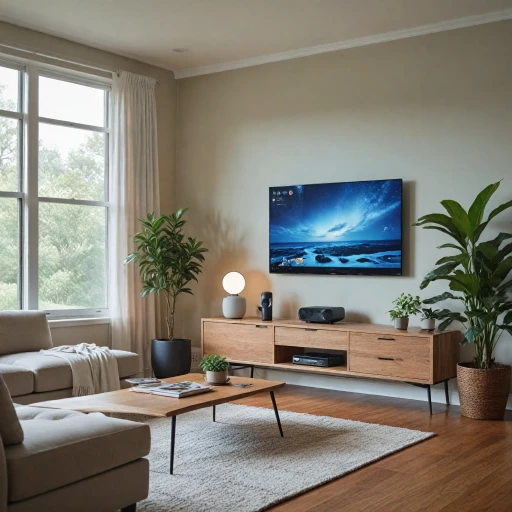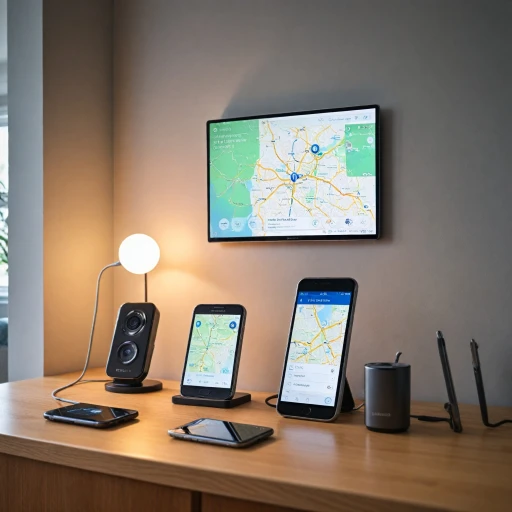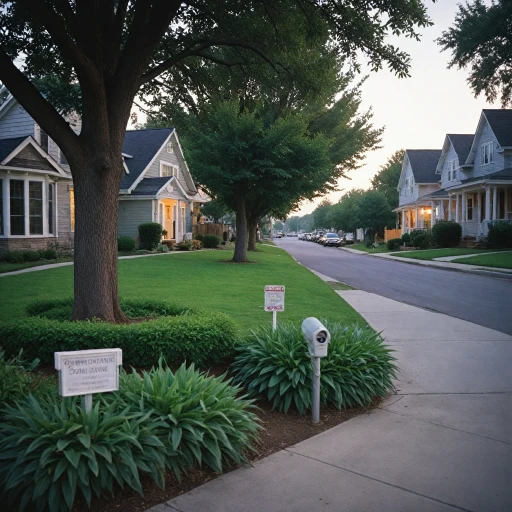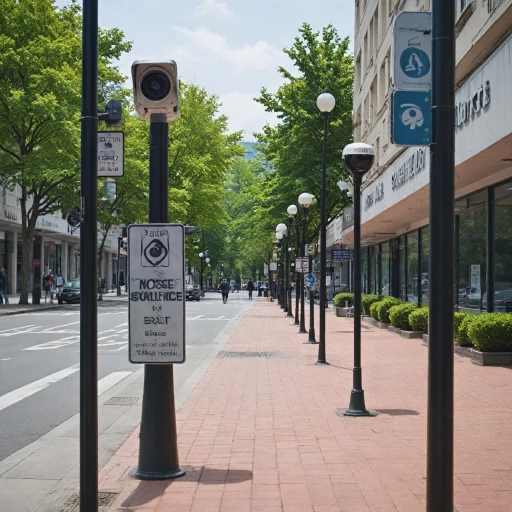
Understanding Motion Detection in Ring Cameras
Getting Started with Motion Detection
The Ring camera, like many other security cameras, utilizes a motion sensor to detect movement in its field of view. This mechanism is crucial for triggering alerts and recording activity that the camera deems notable. In the modern age of home security, the ability to detect motion is synonymous with safeguarding your property, ensuring peace of mind, and deterring potential threats.
Understanding how your Ring device achieves this can be paramount in troubleshooting any issues you might encounter. So, what does motion detection really entail in this context?
Essentially, Ring cameras use a combination of software algorithms and hardware components to identify motion. The process involves constant scanning of the camera's field of view and a quick analysis via the Ring app and accompanying settings. When motion is detected, a notification or alert may be sent to your device, prompting you to take appropriate action.
Each Ring camera and its corresponding app allow you to customize sensitivity settings to better cater to your specific environment. This customization is important because an inappropriate setting might result in frequent false alerts or a failure to capture significant motion events. Ensuring that your camera detecting motion accurately is also influenced by several environmental factors, including lighting conditions and placement, which can impact its overall efficiency.
As you navigate this aspect of your Ring device, becoming familiar with how motion detection works serves as a fundamental step before delving into potential detection failures and adjustments. By doing so, you equip yourself with the knowledge to accurately diagnose and rectify issues, enhancing the reliability of your home security system.
Common Reasons for Motion Detection Failures
Possible Causes Behind Motion Detection Failures
Unexpected failures in motion detection on your Ring camera can be quite frustrating, especially when you rely on your camera to safeguard your home. Let's break down several common factors that could lead to your Ring camera not detecting motion as expected:- Incorrect Device Settings: It's important to routinely check the settings in your Ring app. Adjustments might be needed to fine-tune your camera's motion sensor to detect a broader or narrower field. Keep in mind, similar approaches apply to other security cameras, like Arlo.
- Issues with Camera Positioning: The physical setup of your camera affects its ability to detect motion effectively. The angle and height should be optimal to cover the necessary area without blind spots.
- Network Connectivity Problems: A stable internet connection is crucial for your Ring camera — or any smart camera — to function correctly. Inconsistent connectivity might result in delayed or missed motion alerts and, consequently, motion detection failures.
- Muted or Disabled Alerts: In some cases, notifications might be muted or you could have inappropriate settings that prevent alerts. Be sure to explore the Alert Settings in your Ring app to ensure alerts are active.
- Improperly Calibrated Motion Zones: If you have restricted motion zones set on your camera, it might fail to detect motion in areas outside these predetermined zones. This can be particularly problematic if not properly set up.
- Obstruction of Camera View: Physical obstructions in the camera’s field of view, such as foliage or furniture, can inhibit its ability to pick up motion effectively. Regular maintenance to ensure a clear view can alleviate these issues.
Adjusting Motion Sensitivity Settings
Fine-Tuning Your Detection Settings
To optimize your Ring camera's ability to detect motion effectively, it's crucial to understand the sensitivity settings available within your Ring app. These settings directly influence how your device responds to movement within its view.
Firstly, access the device settings via the Ring app on your smartphone. Once there, locate the motion settings, which will often allow you to adjust motion sensitivity based on your preferences.
- Motion Sensitivity: By increasing sensitivity, your camera will be more responsive to minor movements, potentially detecting motion more effectively. However, this may also lead to an uptick in unnecessary alerts, so finding a balanced configuration is key.
- Zones of Detection: Many security cameras, including Ring cameras, offer customizable detection zones. These zones enable you to focus the camera's attention on specific areas while ignoring others, helping to enhance the accuracy of motion detection and reduce false alarms.
- Scheduling: Incorporating a schedule for your motion alerts ensures that notifications are active only during specified times. This can help mitigate alert fatigue, a common issue while managing multiple security cameras.
Being aware of these settings not only assists in detecting motion more effectively but also ensures that your security cameras aren't overwhelmed by inappropriate content or unintended signals. If adjustments here don't resolve motion detection issues, further troubleshooting might be necessary. For more advanced customization options, exploring additional integrations like the Gemini Alarm System could offer enhanced control over your security setup.
Environmental Factors Affecting Motion Detection
Influence of Surroundings on Success in Capture
Environmental factors can significantly affect a camera’s ability to consistently detect motion. These factors include elements and obstacles in and around your home that may interfere with your Ring camera's functionality.
- Lighting Conditions: Varying light levels can confuse the motion sensor. Ensure well-balanced lighting around your camera position for effective capture. Avoid placing cameras directly facing bright light sources, as this may cause the sensor to either miss motion or become desensitized.
- Obstacles: Factors such as foliage, fences, or pillars can obstruct the camera’s field of view, impeding its motion detection capabilities. Make sure to position your cameras without such blockages to maintain functionality.
- Weather Conditions: Adverse weather situations, like heavy rain or fog, can compromise the sensor’s ability to accurately detect movement.
- Reflective Surfaces: Surfaces that reflect sunlight or artificial light can create false triggers for the motion sensor. Position your Ring camera to minimize reflections that might affect detection.
By acknowledging these environmental factors, users can enhance the performance of their Ring cameras in detecting motion. Begin with adjusting the camera placement and the physical environment before tweaking any security camera settings in the app. Note that adapting to environmental challenges will complement your efforts to detect motion adequately. Remember, routine checks and being aware of surroundings help ensure your devices remain in optimal condition for home security.
Troubleshooting Steps for Motion Detection Issues
Overcoming Motion Detection Issues
When your Ring camera is not detecting motion, several troubleshooting steps can help address the issue. Begin by ensuring the functionality of your security camera app. Verify that you have the latest version of the Ring app installed and that all device settings are correctly configured. This often resolves common detection issues.- Check Device Settings: Verify the camera's motion detection features are not inadvertently muted or altered. Access the settings menu to review and adjust the sensitivity levels for optimal security.
- Inspect for Obstructions: Confirm there are no physical barriers blocking the camera’s view. Objects such as overgrown foliage or new structures can impede the motion detection capabilities.
- Review Camera Placement: The location of your camera plays a significant role in its effectiveness. Ensure it is mounted at the recommended height and angle to capture the intended field of view.
- Rule Out Environmental Factors: Lighting changes or weather conditions can influence motion detection. Consider if factors like reflections from lights or heavy rain might be misinterpreted by the camera as motion or cause false alerts.
- Test Another Network: Sometimes a weak Wi-Fi signal can disrupt communication between the camera and the app. Attempt reconnecting to a different network to test if this alleviates the issue.
When to Seek Professional Help
Recognizing When It's Time for Professional Assistance
When standard troubleshooting procedures do not resolve the issues with your Ring camera's motion detection, it might be time to consider professional help. This decision can save you time and provide a definitive resolution to ensure your security needs are met.- Persistent Malfunctions: If your camera continues to face motion detection problems despite adjusting settings and considering environmental factors, it may suggest a technical issue within the device itself.
- Hardware Concerns: Sometimes, issues with detecting motion can arise due to the physical state of the security camera. Problems such as a misaligned motion sensor or faulty hardware components may require a professional technician to address.
- Software and App Configuration: In instances where camera and app settings seem inappropriate or complex beyond typical user configurations, a professional's knowledge can be invaluable. They can ensure the Ring app and camera are synced effectively with your device settings.
- Ensuring Optimal Results: Opting for professional advice can also help make sure you're using your security camera setup efficiently, avoiding false alerts, improving RSS feed notifications, and managing alerts more seamlessly.













